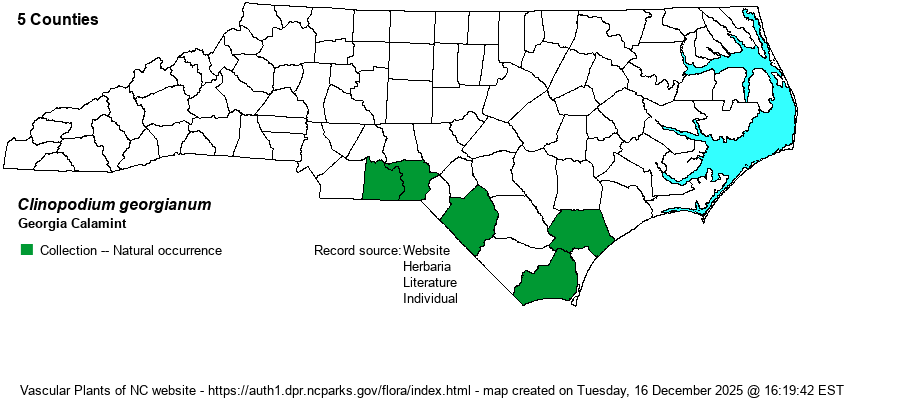| Author | R.M. Harper | |
| Distribution | Only in the southern parts of the Coastal Plain and Piedmont, from Pender County on the east to Anson County on the west. Anson is the only Piedmont county of occurrence known so far in the state.
This species has a small range, only from southern NC to far western FL and eastern LA. It does occur well north into northern AL and GA, and to western SC.
| |
| Abundance | Very rare to rare, and rather highly threatened (by development, fire suppression, and mismanagement of roadsides) as well. It is a State Endangered species. | |
| Habitat | This species occurs in dry, rocky or sandy places, often where the area is disturbed. Some of the NC sites are along the edges of sandy pinewoods, particularly on roadbanks with thin soil and little woody competition. A few sites are on rocky slopes or bluffs. It does not occur in deep sands in the state, but in thinner soils; thus, it is seldom found in typical Pine/Scrub Oak Sandhill or Xeric Sandhill Scrub natural communities. | |
| Phenology | Blooms and fruits from July to September. Most NC populations bloom in August and September. | |
| Identification | This is essentially the only native woody mint species (Family Lamiaceae) in the state. It is a low shrub that grows mostly just 10 inches to about 1.5 feet tall, with usually many stems emanating from the base, producing a wide, bushy look. These stems are typically unbranched or sparsely branched above the base. Leaves are deciduous, opposite, and quite small, mostly only 3/4-1-inch long, with some shallow teeth. The many pink to lavender-pink, mint-like flowers are almost as long as the leaves, each about 1/2-inch long, in the leaf axils attract attention in late summer and early fall. Thus, the whole plant can essentially turn “pink” when in full bloom. | |
| Taxonomic Comments | This plant has been moved around from one genus to another several times in the past 50 or more years, in a very confusing manner. RAB (1968) had it listed as Satureja georgiana. Other references listed it as Calamintha georgiana. Recently, it has been moved to the large genus Clinopodium, as Clinopodium georgianum.
| |
| Other Common Name(s) | Georgia Basil, Georgia Savory | |
| State Rank | S1 | |
| Global Rank | G4 | |
| State Status | E | |
| US Status | | |
| USACE-agcp | | |
| USACE-emp | | |

